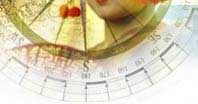 |
|
Thousands years ago Jakarta was created from mud sediment
from rivers crossing this area heading into a gulf. The sediment
hardened, forming a furrow of stable land, or delta, shaped
like a Chinese wood-fan. It was this area of land which evolved
into the busy 14th and 15th century harbor called Sunda Kelapa.
On June 22nd, 1527, Fatahillah (an Indonesian Prince who took
over this area from the Dutch) changed the name from Sunda
Kelapa to Jayakarta. From then on, this date has been commemorated
as Jakarta's birthday.
Jakarta lies on the northwestern coast of Java, from latitude
6' to 7' south and 107' to 108' east. In terms of size, Jakarta
covers a land area of 650.40 sq. km., constituting 0,03 %
of Indonesia's total land area. It has a population of over
9 million.
For administrative purposes, Jakarta is divided into 5 jurisdictions:
Central Jakarta (54.89 sq. km.), West Jakarta (131.41 sq.
km.), North Jakarta (136.96 sq. km.), East Jakarta (182.01
sq. km.), and South Jakarta (145.13 sq. km.).
The northern part of Jakarta is a plain land. Some areas here
are actually below sea level and therefore subject to frequent
flooding. Meanwhile, the southern parts of the city are hilly,
and consequently designated for reservoirs. There are ten
rivers in the south, most of these being canals flowing from
the mountains in the south, northwards towards the Java Sea.
The most important river is the Ciliwung, which divides Jakarta
into Western and Eastern principalities. The smaller ones
are: Kali (meaning river) Sunter, Kali Cipinang, Kali Krukut,
Kali Grogol, Kali Krendang and Kali Malang.
With a tropical climate, Jakarta's average daily temperature
is 27 degrees Celsius during a day, sometimes exceeding 35
degrees Celsius in the hot season. Nights are cooler, and
as with the rest of the country, Jakarta has two seasons:
the wet season from October to April (with the heaviest rains
falling from December to January), and the dry season from
May to September.
|
|
|
 |






